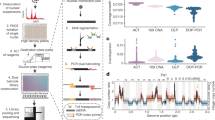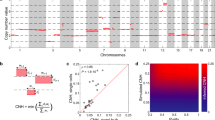Abstract
A new cell line, XH1, has been derived from an invasive focally keratinising adenosquamous carcinoma of the cervix in a 32 year old patient. It has been maintained in long term monolayer culture for 26 months, and passaged over 100 times (much greater than 300 population doublings). It is aneuploid with a mean chromosome number of 78. Examination using two minisatellite hypervariable DNA probes has shown it to be different from other cell lines maintained in this laboratory and from HeLa. Two sublines, XH1a and XH1b, show marked differences in monolayer culture, growth in soft agar, and xenograft formation. XH1 and XH1a cells readily form subcutaneous xenografts, and lung colonies can be established by their intravenous injection. Subcutaneous injection of XH1b cells results in rapid cell growth for a few days after which the tumour undergoes degeneration and then regresses completely. The XH1 karyotype has many rearranged chromosomes. Parental XH1 cells and both sublines show integration of HPV16 into the genome.
This is a preview of subscription content, access via your institution
Access options
Subscribe to this journal
Receive 24 print issues and online access
$259.00 per year
only $10.79 per issue
Buy this article
- Purchase on Springer Link
- Instant access to full article PDF
Prices may be subject to local taxes which are calculated during checkout
Similar content being viewed by others
Author information
Authors and Affiliations
Rights and permissions
About this article
Cite this article
Han, X., Lyle, R., Eustace, D. et al. XH1 – a new cervical carcinoma cell line and xenograft model of tumour invasion, 'metastasis' and regression. Br J Cancer 64, 645–654 (1991). https://doi.org/10.1038/bjc.1991.376
Issue Date:
DOI: https://doi.org/10.1038/bjc.1991.376



